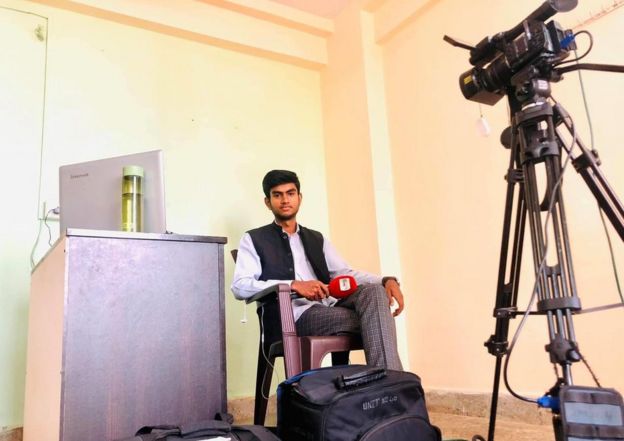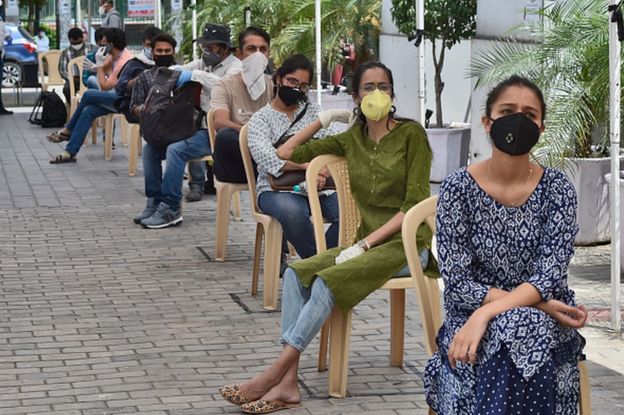Last fortnight, a camera operator working in the studio of a news network in the western city of Mumbai joined some of his colleagues to test for the novel coronavirus which was sweeping the city.
Days after, the 35-year-old man tested positive. He had developed no symptoms at all.
“It came as a shock to all of us. He hadn’t even stepped outside for work,” Prasad Kathe, the editor of Jai Maharashtra, told me.
Since then, 15 people working at the seven-year-old Marathi news network have tested positive for the virus. Most of them are reporters and camerapersons. Three weeks ago, the network stopped deploying journalists for field assignments. Most of them are quarantined at home.
The contagion has effectively shut down the network’s 12,000 sq ft two-studio newsroom in an eight-storey building in the busy neighbourhood of Andheri. Only two people – an electrician and a production control room technician – remain there.
A majority of the 120 employees – from the journalists to technicians to company drivers – have been tested. The results are arriving slowly from the overwhelmed labs. The infections could rise further.
“Hit by the virus, running a live news channel became a challenge,” Mr Kathe told me. “So we had to redesign our format to keep it running.”
For the last three weeks, the direct-to-home network has been broadcasting six 28-minute live bulletins a day instead of the usual 18. The rest of the time is filled with recorded news and current affairs programmes.
And the station is far from the only one to be affected: almost 100 journalists have tested positive for the virus – a considerable amount in a country where just more than 42,000 cases have been officially reported.

Anchors sitting in their boxy homes in the space-starved city have set up cameras and gamely read the news with the network’s branding in the background. The broadcasts are relayed to its production centre home using their home broadband and 4G mobile hotspots.
“There are glitches. Sometimes the electricity goes off in the anchor’s home in the middle of the bulletin. Sometimes the internet gets disconnected. It’s not easy, but we are coping and haven’t missed a single bulletin,” says Mr Kathe.
India has ordered its people to stay at home, shut businesses and suspended all transport in what is the world’s most grinding lockdown to contain the spread of the novel coronavirus.
But many journalists – especially working for networks – have been going out regularly to report and getting infected.
Some 35 are infected in southern Chennai city. A sports photographer in the eastern city of Kolkata has died in what doctors believe was a suspected case of Covid-19. There are reports of 19 employees of the influential Punjab Kesari media group in the city of Ludhiana in Punjab state testing positive. Earlier this month, the group asked its employees to work from home.
But most of the infections have been reported from Mumbai, which has emerged as a raging hotspot – more than 11,000 infections and 340 deaths have been reported in India’s financial and entertainment capital so far.
Fifty-three of the 167 journalists tested for the infection in the city so far have turned in positive results. Three dozen of them have returned home; the others are recovering in hospitals. Many more are quarantined at homes and hotels. Some 170 more journalists are waiting to be tested.
Most of the infected are TV reporters and camerapersons and have shown no symptoms. The majority of the infected in India could be asymptomatic or show mild symptoms, reckons the Indian Council of Medical Research.


